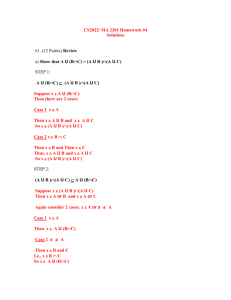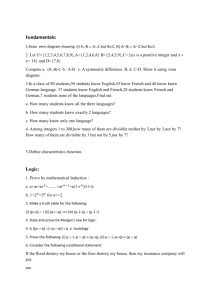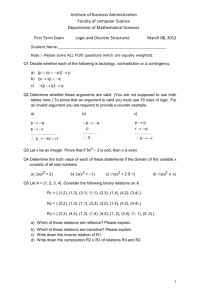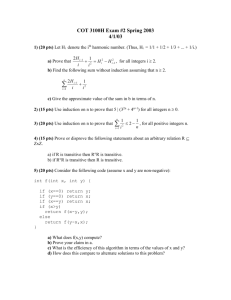Extra Credit Problems
advertisement
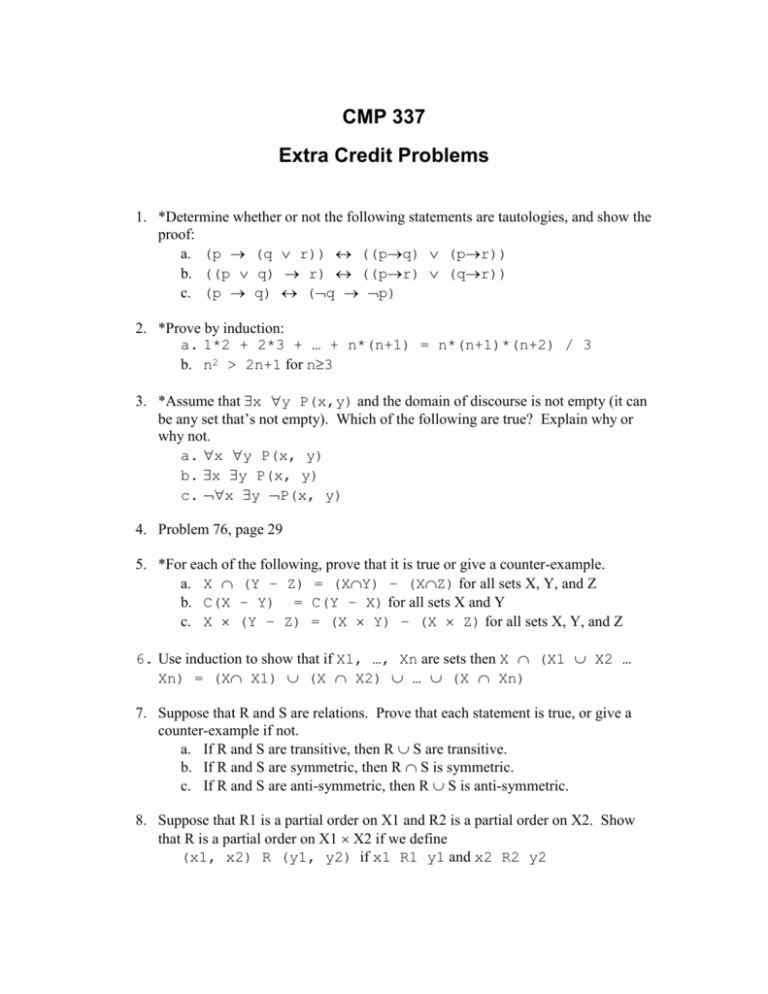
CMP 337 Extra Credit Problems 1. *Determine whether or not the following statements are tautologies, and show the proof: a. (p (q r)) ((pq) (pr)) b. ((p q) r) ((pr) (qr)) c. (p q) (q p) 2. *Prove by induction: a. 1*2 + 2*3 + … + n*(n+1) = n*(n+1)*(n+2) / 3 b. n2 > 2n+1 for n3 3. *Assume that x y P(x,y) and the domain of discourse is not empty (it can be any set that’s not empty). Which of the following are true? Explain why or why not. a. x y P(x, y) b. x y P(x, y) c. x y P(x, y) 4. Problem 76, page 29 5. *For each of the following, prove that it is true or give a counter-example. a. X (Y – Z) = (XY) – (XZ) for all sets X, Y, and Z b. C(X – Y) = C(Y – X) for all sets X and Y c. X (Y – Z) = (X Y) – (X Z) for all sets X, Y, and Z 6. Use induction to show that if X1, …, Xn are sets then X (X1 X2 … Xn) = (X X1) (X X2) … (X Xn) 7. Suppose that R and S are relations. Prove that each statement is true, or give a counter-example if not. a. If R and S are transitive, then R S are transitive. b. If R and S are symmetric, then R S is symmetric. c. If R and S are anti-symmetric, then R S is anti-symmetric. 8. Suppose that R1 is a partial order on X1 and R2 is a partial order on X2. Show that R is a partial order on X1 X2 if we define (x1, x2) R (y1, y2) if x1 R1 y1 and x2 R2 y2 9. *Let f be a function from X to Y. Show that the relation xRy if f(x) = f(y) is an equivalence relation. 10. (Hint: This is a combinatorics problem! For the approach to use for this question, see the answers to problems 22 and 25 on page 210) Find the number of integer solutions of x1 + x2 + x3 = 15, subject to the conditions below: a. x1 1, x2 1, x3 1 b. x1 = 1, x2 0, x3 0 c. 0 x1 6, x2 0, x3 0

